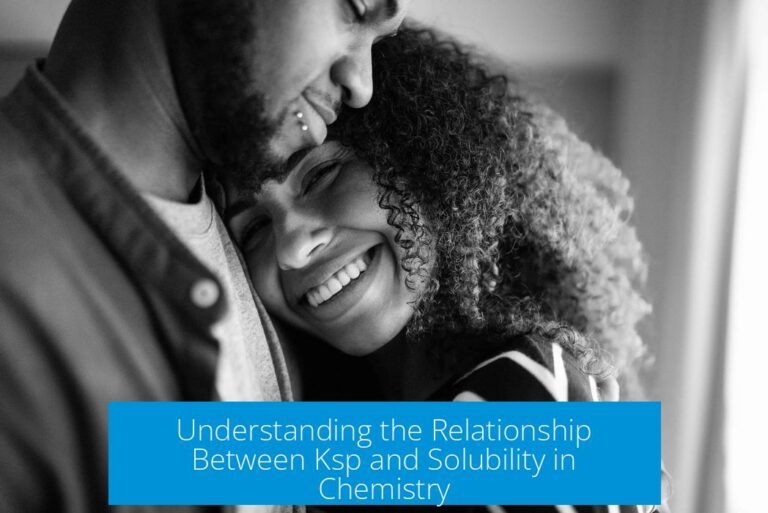Not all fluoropolymers are hazardous to human health. Fluoropolymers such as PTFE, PVDF, and PFA are chemically inert and stable under normal use, posing minimal direct health risks. However, hazards can arise from manufacturing residues, decomposition at high temperatures, and certain related substances like perfluorinated detergents.

Understanding Fluoropolymers and Their Chemical Stability
Fluoropolymers describe a class of polymers containing fluorine atoms bonded to carbon. Common examples include PTFE (polytetrafluoroethylene, known as Teflon), PVDF (polyvinylidene fluoride), and PFA (perfluoroalkoxy alkane). These materials are highly chemically stable due to the strong carbon-fluorine (C–F) bond.

This bond gives fluoropolymers exceptional inertness, making them resistant to chemical attack and breakdown. Under normal conditions, these materials do not react with the human body or release harmful substances. Therefore, from a chemical standpoint, fluoropolymers themselves are generally safe for human health during regular use.
Potential Contamination from Manufacturing Residues

Despite their inertness, fluoropolymers may retain traces of per- and polyfluoroalkyl substances (PFAS) from the manufacturing process. PFAS are a broad group of synthetic chemicals with persistent and bioaccumulative characteristics.
While the polymers themselves do not pose hazards, residual PFAS contamination could be harmful. PFAS have been linked to toxic effects such as reproductive and organ damage. However, in finished fluoropolymer products, the residual content tends to be extremely low and does not typically present direct consumer risk. Still, this is a consideration in industrial hygiene and environmental safety.

Risks from Decomposition and Heating
Formation of Harmful Compounds on Heating

Fluoropolymers are stable up to high temperatures but decompose beyond certain points. When subjected to pyrolysis or burning—typically above 300 °C—they break down into low molecular weight fluorocarbon compounds, some of which can be highly toxic.
For example, tetrafluoroethylene (a precursor to PTFE) and perfluoroisobutylene, a potent toxic gas, can be released during overheating or combustion. These substances pose acute inhalation hazards.

Toxic Vapors from Teflon Pyrolysis
Residential exposure typically occurs with nonstick cookware coated in PTFE. At temperatures above around 260–300 °C, PTFE begins to degrade slowly. If overheated to the point of smoldering or burning, it produces toxic fumes known as polymer fume fever in humans.

These fumes are especially dangerous to pet birds, which have highly sensitive respiratory systems. Bird owners should avoid cooking with overheated nonstick pans near bird cages.
Specific Chemical Hazard: Perfluoroisobutylene
Burning Teflon releases perfluoroisobutylene, a chemical warfare agent analogue. This compound is highly toxic and can cause severe lung damage. It underscores why burning or directly igniting fluoropolymers is unsafe.
Historical Incidents Related to Perfluorinated Lubricants
In industrial settings, workers exposed to perfluorinated lubricants suffered respiratory illnesses when these substances contaminated cigarettes. Burning the lubricants produced harmful emissions leading to pneumonia in smokers. This demonstrates possible indirect health hazards in certain work environments.
Distinction from Perfluorinated Detergents (PFOA and PFOS)
Perfluorooctanoic acid (PFOA) and perfluorooctane sulfonate (PFOS) are different chemicals sometimes confused with fluoropolymers. These detergents are small molecules used historically in industrial processes and consumer products for stain repellency.
Unlike fluoropolymers, PFOA and PFOS are bioaccumulative and linked to serious organ and reproductive toxicity. Their persistence in the environment represents an ongoing contamination problem. Due to these concerns, many countries have phased out or restricted their use in consumer products.
It is important to differentiate these fluorinated compounds from polymer fluoropolymers. The latter do not pose the same bioaccumulative or direct toxicity risks under typical conditions.
Overall Assessment on Fluoropolymers and Health
Typical consumer use of fluoropolymers—in cookware, medical devices, and industrial applications—shows no direct adverse health effects. Their chemical inertness supports this safety profile.
Concerns largely arise from manufacturing residues, environmental fate of related chemicals, or improper use involving overheating or burning. The risk is low if fluoropolymers are used according to guidelines.
Calls for banning all fluoropolymers often do not distinguish differences among the many PFAS family members. Such blanket measures might exceed what current evidence advises for consumer safety.
Summary of Key Points
- Fluoropolymers like PTFE, PVDF, and PFA are chemically stable and inert under normal conditions, with minimal direct health risks.
- Residues of toxic PFAS chemicals may remain from manufacturing, but levels in finished products are generally low.
- Heating fluoropolymers above safe temperatures creates toxic fluorocarbon gases, including perfluoroisobutylene, which pose significant inhalation hazards.
- Burning or overheating Teflon emits fumes harmful especially to birds and humans; proper use avoids this danger.
- Perfluorinated detergents (PFOA, PFOS) are distinct from fluoropolymers and have recognized toxicity and environmental persistence concerns.
- Normal consumer use of fluoropolymers is considered safe; risk arises from misuse, manufacturing residues, or environmental contamination by related substances.
Are all fluoropolymers hazardous to human health? Let’s break it down!
Not all fluoropolymers pose a direct health risk to humans. Many, like PTFE (commonly known as Teflon), PvdF, and PFA, are chemically stable and inert under normal conditions. This means they don’t react with our bodies or the environment, making them generally safe for everyday use.
But wait—before tossing out the Teflon pans or abandoning polytetrafluoroethylene-coated products, let’s dig a little deeper. There’s a lot more to the story than just the word “fluoropolymer.”
The Beauty of Chemical Inertness (or Why PTFE Doesn’t Want to Fight with You)
Fluoropolymers are champions of chemical stability. The carbon-fluorine bond is one of the strongest in organic chemistry. What does that mean for you? These materials generally don’t break down or interact with your skin, food, or body easily. They stay put, doing their job without causing harm.
PTFE doesn’t leach into your food or body during normal cooking, so you can keep your trusty Teflon pan at arm’s length during breakfast prep.
But Hold On — Manufacturing Residues Could Be Sneaky
Here’s a catch, though. While the fluoropolymers themselves are usually stable, traces of hazardous per- and polyfluoroalkyl substances (PFAS) may lurk behind the scenes. PFAS chemicals often sneak into products during manufacturing.
These residual PFAS are problematic—they stick around in the environment and can harm human health. Unlike fluoropolymers, PFAS are not inert; they bioaccumulate and have been linked to organ and reproductive issues. However, smart regulations have mostly phased them out of household products.
So, your nonstick pan’s fluoropolymer coating is fine, but the ‘leftover’ PFAS from industrial processes is the real troublemaker we need to watch.
When Things Heat Up: Decomposition and Toxic Vapors
Fluoropolymers are incredibly stable—but only up to a point. Heat them too much, and things get tricky.
When fluoropolymers are overheated or burned, they can break down into harmful chemicals like tetrafluoroethylene and perfluoroisobutylene. The latter sounds like a villain from a chemistry comic, and rightly so—it’s a highly toxic compound originally developed as a chemical warfare agent.
Practical advice? Don’t let your pan smoke or smolder. If you do, you risk inhaling toxic vapors—especially dangerous for pet birds. Their respiratory systems are way more sensitive than ours. If you have a parrot, keep its cage far from the kitchen, and avoid overheating Teflon pans.
Also, historical accounts tell of smokers who used perfluorinated lubricants that contaminated cigarettes. When lit, these chemicals produced toxic fumes causing severe lung issues. This shows how burning certain fluorinated substances can pose health hazards beyond everyday cooking.
Clear the Air: Fluoropolymers vs. Perfluorinated Detergents
It’s important not to confuse the stable, inert fluoropolymers with more notorious PFAS cousins like PFOA and PFOS. These perfluorinated detergents earned a bad reputation for their toxicity, persistent environmental pollution, and bioaccumulation. They’ve caused huge contamination problems in water supplies.
Though PFOA and PFOS were historically used to help make nonstick coatings, their use in consumer goods has largely ended, thanks to safety regulations. The environmental concerns remain significant but they represent a separate issue from the fluoropolymers themselves.
So, Should You Toss Out Your Teflon Pan?
Not so fast. The evidence shows typical consumer use of fluoropolymers like Teflon-coated cookware remains safe when handled properly. The calls to ban all fluoropolymers are likely an overreaction.
Keep your pan, cook at moderate temperatures, and avoid burning it. That takes care of most concerns!
The key takeaway? Fluoropolymers that remain intact and unburned are generally harmless. However, beware of overheating, and be mindful of environmental impacts linked to certain PFAS chemicals used in manufacturing.
Final Thoughts: Practical Tips to Stay Safe
- Use fluoropolymer-coated cookware according to instructions—avoid temperatures above 260°C (500°F).
- Ventilate your kitchen well when cooking to dilute any fumes.
- Dispose of damaged or flaking nonstick pans responsibly.
- If you have pet birds, keep their cages away from kitchens.
- Advocate for tighter industrial controls on PFAS contamination to protect the environment.
In essence, not all fluoropolymers are villains in disguise; some are silent, tough heroes helping your kitchen run smoothly. Just don’t give them a reason to revolt with high heat or neglect!
Why fear fluoropolymers when you’re armed with the facts? Instead, appreciate the chemical wizardry that keeps your pancake from sticking and your kitchen humming safely.
Are all fluoropolymers harmful to human health?
No. Fluoropolymers like PTFE are chemically stable and inert under normal conditions. They usually do not harm humans directly.
Can fluoropolymers become hazardous in certain situations?
Yes. When heated to very high temperatures, they can break down and release toxic compounds such as perfluoroisobutylene and other harmful fluorocarbons.
Is the health risk from fluoropolymers linked to their manufacturing process?
Fluoropolymers themselves are inert, but residues of PFAS chemicals from manufacturing may pose health risks if contamination occurs.
Are perfluorinated detergents like PFOA and PFOS the same as fluoropolymers?
No. PFOA and PFOS are distinct chemicals used in making some fluoropolymers but are toxic and persistent pollutants. These detergents have been mostly phased out from consumer goods.
Should consumers avoid using products like Teflon pans?
Typical use of Teflon cookware is generally considered safe. Risk arises mainly from overheating or burning, which produces harmful fumes. Normal cooking temperatures do not pose a hazard.





Leave a Comment